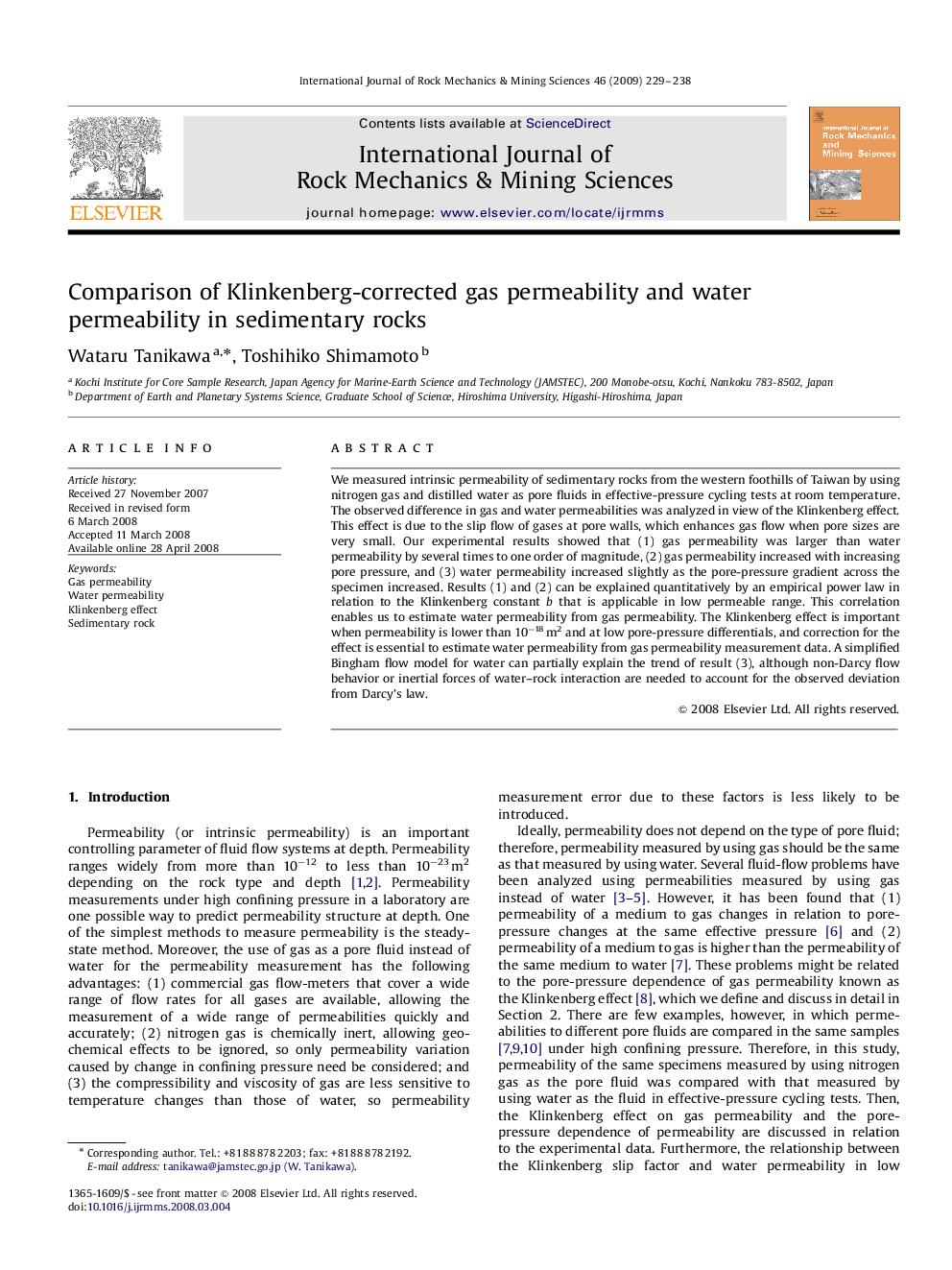| Article ID | Journal | Published Year | Pages | File Type |
|---|---|---|---|---|
| 809960 | International Journal of Rock Mechanics and Mining Sciences | 2009 | 10 Pages |
We measured intrinsic permeability of sedimentary rocks from the western foothills of Taiwan by using nitrogen gas and distilled water as pore fluids in effective-pressure cycling tests at room temperature. The observed difference in gas and water permeabilities was analyzed in view of the Klinkenberg effect. This effect is due to the slip flow of gases at pore walls, which enhances gas flow when pore sizes are very small. Our experimental results showed that (1) gas permeability was larger than water permeability by several times to one order of magnitude, (2) gas permeability increased with increasing pore pressure, and (3) water permeability increased slightly as the pore-pressure gradient across the specimen increased. Results (1) and (2) can be explained quantitatively by an empirical power law in relation to the Klinkenberg constant b that is applicable in low permeable range. This correlation enables us to estimate water permeability from gas permeability. The Klinkenberg effect is important when permeability is lower than 10−18 m2 and at low pore-pressure differentials, and correction for the effect is essential to estimate water permeability from gas permeability measurement data. A simplified Bingham flow model for water can partially explain the trend of result (3), although non-Darcy flow behavior or inertial forces of water–rock interaction are needed to account for the observed deviation from Darcy's law.
